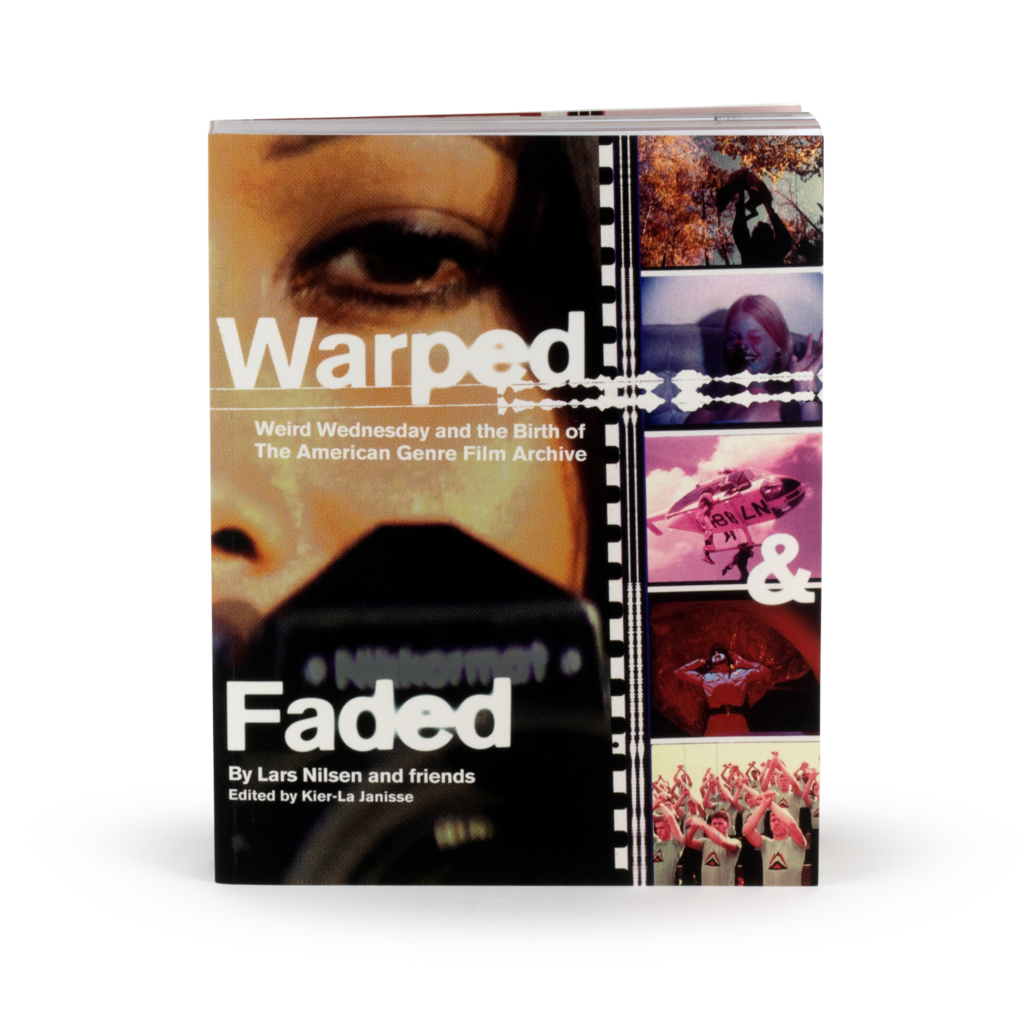
Warped and Faded: Weird Wednesday and the Birth of AGFA
When it comes to media, we live in a time of abundance, maybe even gluttony. Many, maybe even most, of the people who watched some of this year's biggest blockbusters on opening day didn’t have to leave their house. They just fired up a streaming service and there it was. The same thing rings true at the opposite end of the spectrum of taste. Forgotten trash cinema used to be the exclusive domain of obsessive collectors and connoisseurs of the obscure who would find each other in the back pages of zines and dig through dusty boxes at flea markets and conventions. But, now a movie that 20 years ago might have been a holy grail you’d only heard rumors of can now be stumbled upon with just a few button presses on your tv remote. You used to have to leave your house for this stuff.
Mondo’s new book "Warped and Faded" tells a story of those actually-not-that-long-ago days and how a decrepit warehouse full of moldy half-decayed film prints ended up spawning Weird Wednesdays at the Alamo Drafthouse, and years later morphed into the American Genre Film Archive (AGFA), a nonprofit that houses, leases, and digitizes perhaps the greatest and most expansive collection of cult films on the planet.
The book was written by Lars Nielson--the original curator and host of Weird Wednesday--and edited by former Drafthouse programmer and current writer/director/producer Kier-la Janisse, works as both an oral history and a film encyclopedia, while also being a gorgeous full color deluxe format book packed with eye-popping art. The book is framed by an oral history of Weird Wednesday and the early days of the Alamo Drafthouse. Drafthouse founder Tim League found himself in possession of 20,000 pounds of vinegar-rotted B-movie film reels and decided the best way to sort through these mostly unknown and forgotten films was to show them for free at midnight on Wednesdays. With that, Weird Wednesday was born and over the course of the next 20 years it would attract fellow fans of the obscure and outrageous side of cinema. The book tells this story in the words of the people who lived through those screenings and it’s full of great anecdotes like snake-infested offices and encounters with a saucy Susan Tyrell.
The largest section of the book is a compendium of every film shown at Weird Wednesday from its founding in 2001 up until the establishment of AGFA in 2010. It has most of the original capsule write-ups from the Alamo calendar nestled between a treasure trove of poster art and stills from the movies.
The third part is the Weird Wednesday Hall of Fame, which is a series of essays about some of the most frequent and notorious contributors to Weird Wednesday films, such as Al Adamson, George “Buck” Flower, and Joe Sarno. The epilogue of the book returns to the oral history format from the beginning to tell the story of the birth of AGFA, which completes the circle in a beautiful way as these films that weirdoes and vagrants and fratboys wandered into on a Wednesday night are now being lovingly preserved and digitized so that future generations will be able to enjoy cinematic triumphs like The Corpse Grinders and Guru, the Mad Monk.
For a certain type of person, this book is a fetish object of the highest degree. You get a great “let’s put on a show” type story from a bunch of scrappy underdogs, a film guide that has 100s of movies to marvel at and try to track down, and searing full-color eye candy on every single page. This book begs for a place of honor on your coffee table where anybody can pick it up, riffle through it and wonder at the fact that a movie like Polk County Pot Plane not only exists, but will live on thanks to the legacy of Weird Wednesday.

